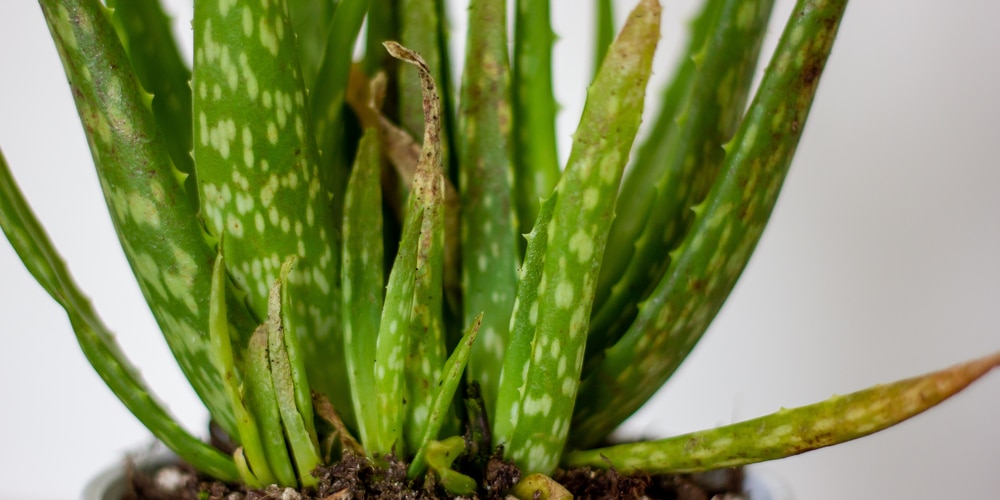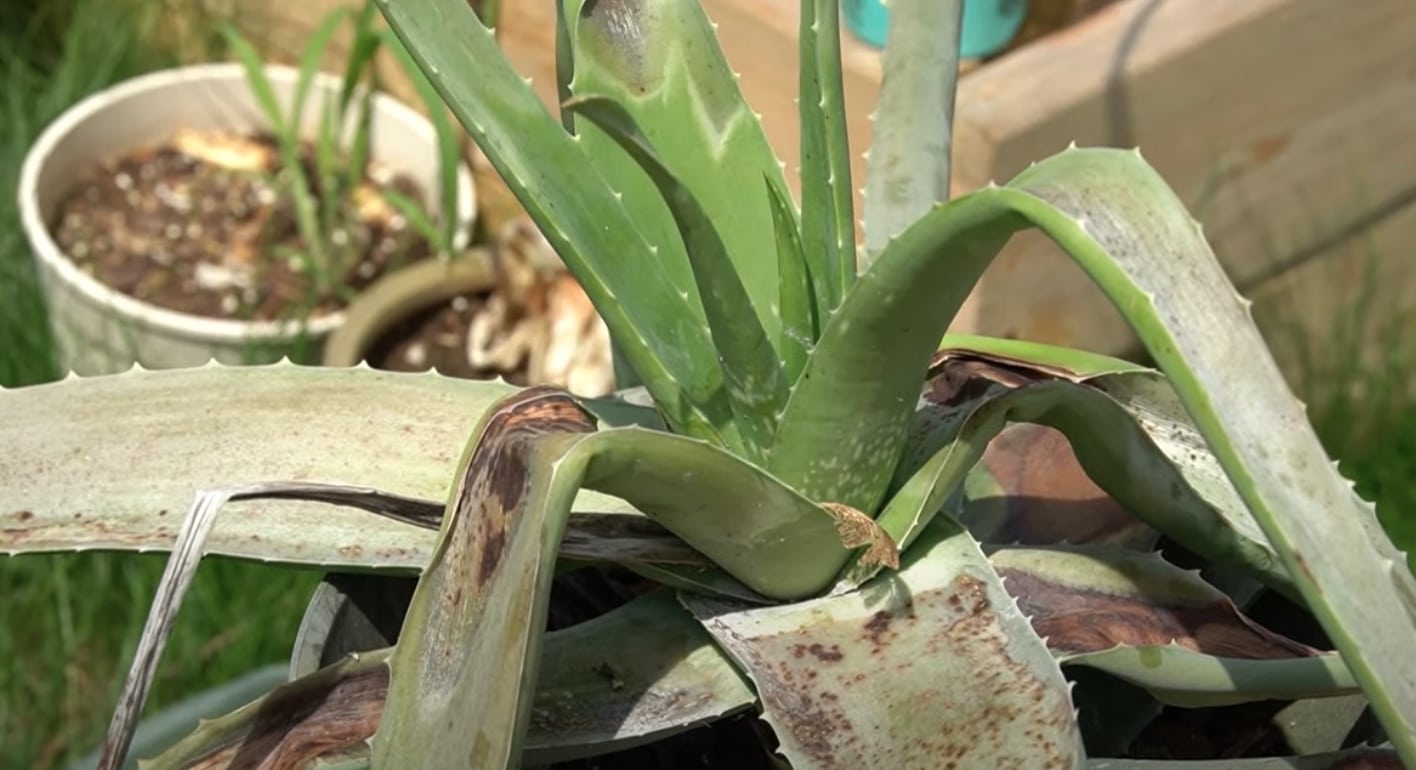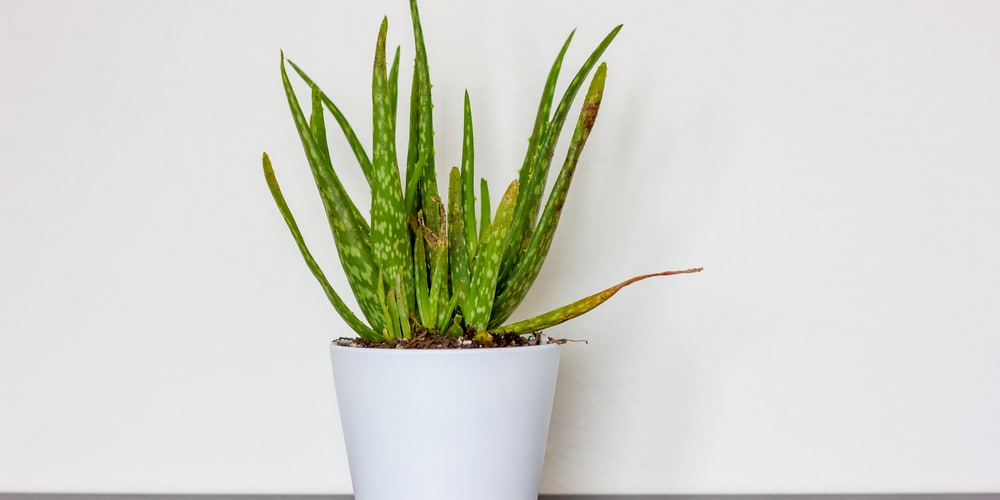Whether you’re nursing an aloe plant you found or your otherwise healthy aloe is suddenly developing black spots, it’s understandably concerning.
Leaf spot is the common name for black spots on aloe plants, and several situations can cause it. Below are some of the most common reasons for black spots on aloe plants and how to fix them.
Fungus Infection

There’s no shortage of fungus infections that can infect aloe plants. Most of the time, these infections occur because of overwatering.
Some common funguses that attack aloe and make their leaves develop black spots include:
- Aloe rust
- Anthracnose
- Leaf spot disease
- Basal stem rot
Of these funguses, leaf spot disease is the most common reason an aloe plant’s leaves may have black spots. The black areas start small but gradually expand until they eat away at all the leaves.
The Fix
Regardless of the fungus, you should quarantine your aloe from all other plants. Then, cut away the infected leaves and apply a fungicide to the remaining healthy leaves.
It’s also helpful to let the soil dry by not watering your plant for one week. Then, continue watering your aloe plant infrequently until it appears you’ve eliminated the fungus.
Overwatering
Despite the aloe’s thick, juicy leaves, it requires less water than many people expect. But the opposite is true—these plants grow in deserts and store water to get them through the rainy days they know rarely come.
So, if you water your aloe often, they could develop black spots on their leaves that comes from an internal, rotting source. Root rot, stem rot, and soft rot are all common conditions in aloe due to overwatering.
The Fix
Never water your aloe plant if the top soil is moist. If you have a case of overwatering, let the soil dry out for a minimum of 15 days.
Check the plant’s drainage to ensure the water you give it has an exit. Then, aim to water your aloe plant in small amounts weekly.
Too Much Sunlight

Aloe plants require sunlight. But too much direct sun can damage their leaves, forming black spots. Sunlight isn’t the only culprit. Excessive artificial light can cause black spots on your aloe plant too.
If excess light is the culprit, your aloe plant will likely also show signs of wilting, especially if it’s in its later stages of sun scorch.
The Fix
Your aloe plant needs four to six hours of sunlight. So, move it to a place where it’ll receive less sun, preferably a western-facing window. Furthermore, keep artificial light at least six feet away from your plant.
Not Enough Humidity
Aloe plants hail from low-humidity regions, but they still need some moisture. So, their leaves might develop black spots if there isn’t enough humidity in the air.
Other indications that your aloe plant suffers from too little humidity are reduced growth and wilting leaves. Without sufficient moisture, your plant will reduce its photosynthesis efforts.
The Fix
Use a water bottle to spray your aloe plant’s leaves occasionally. A humidifier can also improve the humidity in the room where they grow.
Just be sure not to overdo it; you could end up creating more health issues for your aloe plant by them having too much humidity.
Final Thoughts
Aloe plants may look hardy, but maintaining the proper growing environment is vital to keeping them healthy. The good news is that finding black spots on aloe plants isn’t a surefire sign that your plant needs to make a trip to the garbage can.
Instead, acting early and experimenting with different water amounts, sunlight, and fungal treatments can help your aloe regrow healthy spot-free leaves.
